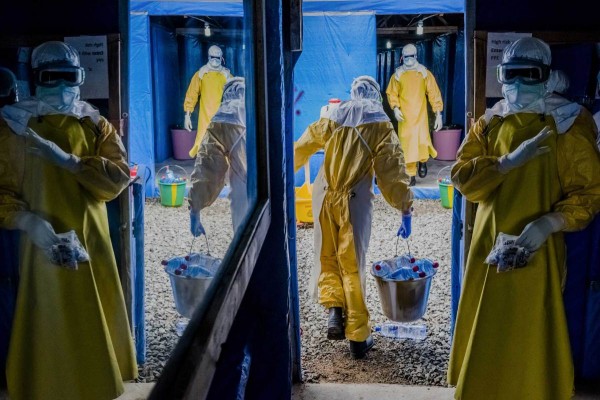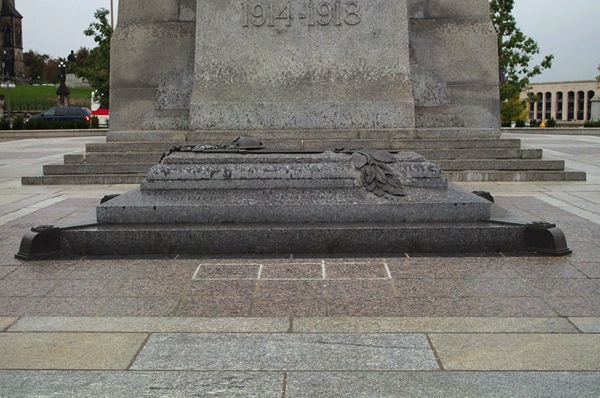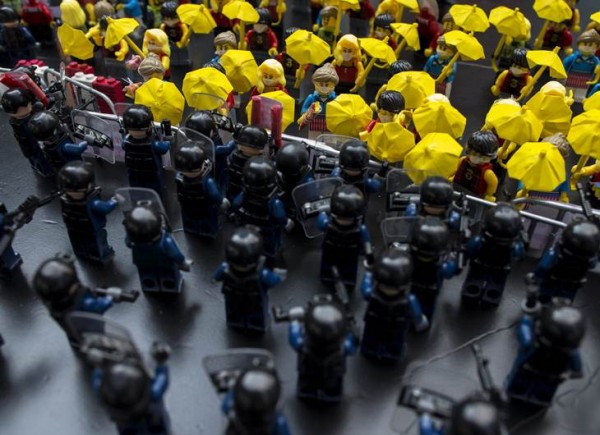Notes
Why that NYT Liberia Photo, Reflecting an Ebola Treatment Unit in the Mirror, Was so Contagious
The caption said, “Health workers enter the high-risk zone as they make the morning rounds at the Bong County Ebola Treatment Unit in Sgt. Kollie Town near Gbarnga, Liberia, Oct. 6, 2014.” Good to know, but not all that is being shown.
So what is being shown? A mirror image, but what is that? And what’s with the visual tricks: isn’t Ebola a serious threat, and shouldn’t the press be emphasizing transparency, clarity, and accountability rather than playing with artistic techniques? We need to know the truth, not be confused about the distinction between image and reality. Or is this a political ruse, taken to suggest that there are more emergency personnel available than is actually the case? Or a critical comment that the number of health care workers needs to be doubled?
Whatever the answers, it might help to ponder the fact that the photographer risked his life to create this photograph. And once at risk, he certainly could have concentrated only on straight-forward reportage, keeping any obvious distractions out of the picture. Yet here we have a photograph that comes with a built-in distraction: divided between a mirror image and the scene reflected, one’s gaze is pulled back and forth, never able to settle on one focal point without having the other as a peripheral vision that disturbs concentration.
Curiously, the second image is troubling precisely because it is too similar to what is being seen directly. Just about anything else could either be disregarded or given direct attention, but the double image keeps undercutting its own validity even as it demonstrates its representational power. Instead of demarcating reality, the image is too close for comfort, uncanny, and suggestive of a truly profound disorientation. Which side is real? How can we tell? What if the mirror has been mirrored?
This discomfort is part of photography’s DNA. Originally valued for its ability to replicate nature, the technology also has fueled anxieties about reality being displaced by an image world. When photographers feature mirror images, they automatically make viewing reflexive, bent back to include both the subject of the photograph and its techniques of composition. The double image reminds us that we are seeing an image rather than reality, and suggests how we can see more, not less, because of that.
The media panic about Ebola has involved massive injections of fear regarding viral replication, contagion, and the ultimate displacement of death, so perhaps an image of photographic doubling can channel or otherwise contain some of the excess emotion. Instead of panic, the doubled image is reflective, creating a space for a slower, more meditative response. Instead of death by contagion, we see an artificial replication that is benign and yet perhaps suited to representing the social system that develops quickly to contain the disease.
And yet, like the oscillation in the image itself, this reflective moment can’t be entirely comforting. The scene is doubly surreal: as if hazmat suits and goggles, emergency tents and water brigades, and the transformation of extraordinary suffering into routines of risk management weren’t enough to deal with, those many dislocations of ordinary life have been doubled, replicated, cast into a space of reproduction that could extend repeatedly around the globe without every becoming a place one would want for one’s own.
You can decide how much of that picture is image, and how much is reality.
— Robert Hariman
(cross-posted from No Caption Needed.)
(photo: Daniel Berehulak/The New York Times)



Reactions
Comments Powered by Disqus